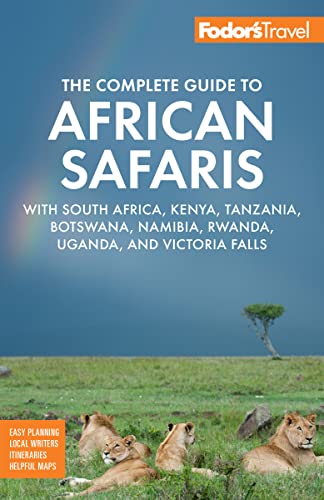As Nairobi is Kenya's capital city and the main hub for visitors, it's very likely that you'll be spending an overnight here between flights. The following information will help you plan those hours productively and safely.
The starting point for safaris since the days of Teddy Roosevelt and Ernest Hemingway, Nairobi is still the first stop for many travelers headed to the wildlife parks of East Africa. Just over a century ago Nairobi was little more than a water depot for the notorious "Lunatic Express." Every railhead presented a new nightmare for its British builders. Work was halted by hungry lions (a saga portrayed in the film The Ghost and the Darkness) as well as by masses of caterpillars that crawled on the tracks, spoiling traction and spinning wheels. Nearsighted rhinos charged the noisy engines. Africans fashioned jewelry from the copper telegraph wires, leading to a head-on collision between two engines after the communication wires were cut.
Nairobi, which means "cool water" in the language of the Maasai, wouldn't remain a backwater for long. In her 1942 memoir, West with the Night, aviatrix Beryl Markham wrote that less than three decades after it was founded, the city "had sprung from a collection of corrugated iron shacks serving the spindly Uganda Railway to a sprawling welter of British, Boers, Indians, Somalis, Abyssinians, natives from all over Africa and a dozen other places." Its grand hotels and imposing public buildings, she wrote, were "imposing evidence that modern times and methods have at last caught up with East Africa."
Today Nairobi's skyline surprises first-time visitors, whose visions of the country are often shaped by wildlife documentaries on the Discovery Channel or news reports on CNN. Since it was founded little more than a century ago, Nairobi has grown into one of the continent's largest capitals. Some early architecture survives here and there, but this city of around 3 million people is dominated by modern office towers.
This isn’t to say the city has lost all its charm—the venerable Norfolk and Stanley hotels recall the elegance of an age long since past. Sometimes you can even describe the city as beautiful. After a good rain the city seems to have more green than New York or London. Brilliant bougainvillea line the highway from the airport, flame trees shout with color, and, in October, the horizon turns lavender with the blossoms of jacaranda.
But Nairobi has more than its share of problems. This city that grew too fast has paralyzing traffic jams, with many unsafe or overloaded vehicles on the road, and no hint of emissions control. Crime is on the rise, and stories about muggings and carjackings have led to the capital's moniker "Nairobbery." In addition, there’s a growing disparity between rich and poor. Private estates on the edge of Nairobi resemble those in Beverly Hills or Boca Raton, with elaborate wrought-iron fences surrounding opulent mansions with stables, tennis courts, and swimming pools. The upper crust is known as the wabenzi, with wa a generic prefix for a people or tribe and benzi referring to the ubiquitous Mercedes-Benz cars lining the driveways. Not far away you can glimpse vast mazes of tin shacks, many with no electricity or running water.
These problems have pushed many travelers to the sanctuary of the suburbs. The Ngong Hills, mark the southwestern boundaries of Nairobi, embracing the suburbs of Langata and Karen. The latter is named after Baroness Karen Blixen, who wrote under the pen name Isak Dinesen about her life on a coffee farm here. Purple at dusk, the Ngong Hills are a restful symbol of salaam, Swahili for "peace."
Exclusive guest homes, such as the Giraffe Manor, Ngong House, and the House of Waine, provide a sense of peace in the suburban bush. Some of the better boutiques selling everything from antiques to art are found in Karen and Langata. The suburb of Langata lies on the edge of the Nairobi National Park, a great introduction to the magnificent wildlife of Kenya. No wonder many visitors return here year after year. They discover how Blixen felt when she wrote in one of her letters, "Wherever I may be in future, I will always wonder whether there’s rain on the Ngongs."






